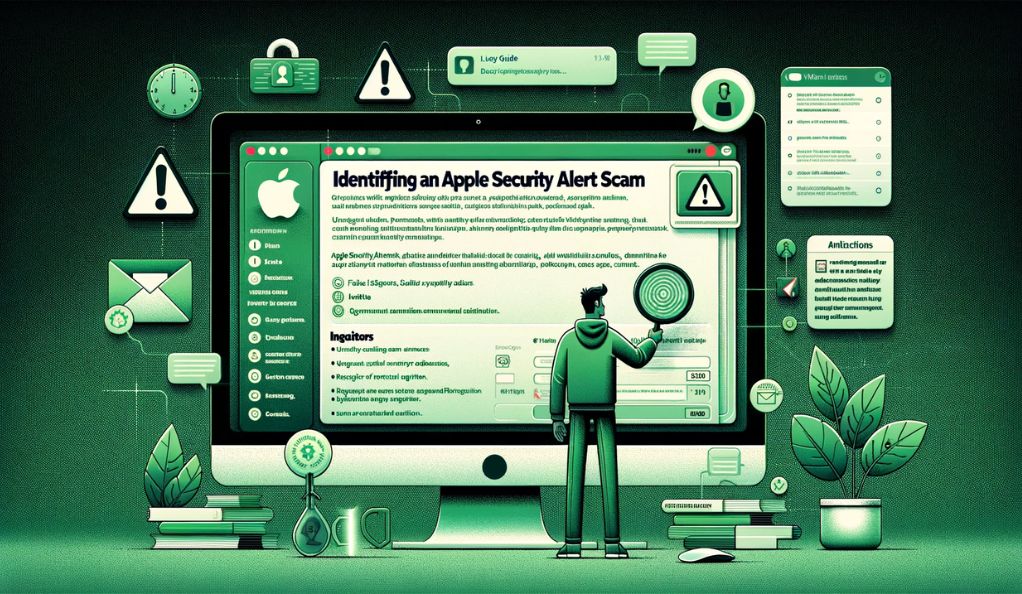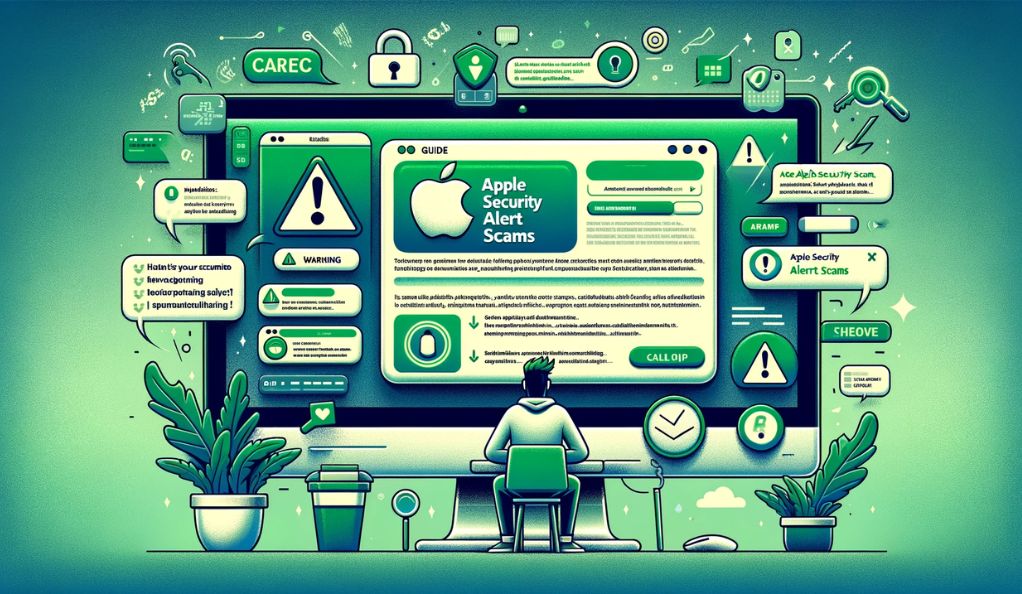Introduction
In recent years, Apple Security Alert scams have been on the rise, posing a growing threat to iOS device users. These deceptive schemes have become increasingly sophisticated, making it crucial for users to be well-informed about them. Recognizing and responding to Apple Security Alert scams is vital to safeguarding your iOS device, personal data, and financial security. In this article, we will delve into the nature of Apple Security Alert scams, providing you with a comprehensive understanding of what they are and how they operate. We will equip you with the knowledge needed to identify these scams, discuss their common characteristics, and differentiate them from legitimate Apple security notifications. By the end of this section, you will have a solid grasp of the fundamentals of Apple Security Alert scams.
What is an Apple Security Alert Scam?
Apple Security Alert scams are a category of fraudulent activities that aim to deceive iOS device users into believing they are receiving official communications from Apple Inc. These scams take various forms and employ a range of tactics to exploit the trust that users place in Apple’s security measures. At their core, they are designed to trick users into taking actions that can lead to the compromise of their personal information and financial loss.
Key Characteristics of Apple Security Alert Scams:
- Alarming Pop-Up Messages: Scammers often use urgent and alarming pop-up messages that suddenly appear on your iOS device’s screen. These messages claim that your device is infected, compromised, or at risk.
- Fear Tactics: These scams frequently employ fear tactics to create a sense of urgency, compelling users to take immediate action. Threats of locking the device or accessing personal data are common.
- Requests for Sensitive Information: Fraudsters commonly request sensitive information, such as login credentials, passwords, credit card details, or social security numbers. They do this under the guise of needing this information to resolve the alleged security issue.
How They Differ from Legitimate Apple Security Notifications:
Legitimate Apple security notifications are genuine alerts designed to enhance the security of your iOS device. They typically come from trusted sources within the device’s settings or official Apple apps and are not accompanied by threats or requests for sensitive information. Understanding these differences is crucial in identifying and avoiding Apple Security Alert scams.
How to Identify an Apple Security Alert Scam

Identifying an Apple Security Alert scam requires vigilance and an understanding of the telltale signs of deception. Here are key indicators that can help you recognize such scams:
- Unexpected Pop-Ups: Be wary of unexpected pop-up messages claiming that your device is infected or compromised. Legitimate security alerts typically do not manifest in this manner.
- Requests for Personal Information: Scammers often request personal information, such as passwords or credit card details, within these messages. Legitimate Apple notifications never ask for such sensitive data through pop-ups.
- Phishing Elements: Phishing is a prevalent component of these scams. Fraudsters use deceptive websites and forms to trick users into divulging sensitive information.
- Grammatical Errors and Poor Design: Pay attention to the quality of the message. Scams often contain grammatical errors, typos, or a poorly designed interface.
- Suspicious URLs: Check the website’s URL for authenticity. Scammers often use URLs that imitate Apple’s official site but contain subtle differences.
Real-Life Examples: To better illustrate these concepts, we will provide real-life examples of Apple Security Alert scams in action later in this article.
Immediate Actions to Take When You Encounter a Scam
When you come across an Apple Security Alert scam, taking prompt action is essential to minimize potential risks. Here are the immediate steps to follow:
- Do Not Interact: Avoid interacting with the scam message or clicking on any links or buttons within it. This prevents further engagement with the fraudulent content.
- Exit the Pop-Up: If a pop-up message appears on your screen, try to exit it using the device’s standard methods for closing windows or apps. Do not engage with any prompts or buttons within the pop-up.
- Force Close Suspicious Apps: If the scam is associated with a particular app, force close that app immediately. On iOS devices, you can do this by double-clicking the Home button (or swiping up from the bottom on models without a Home button) to access the app switcher. Then, swipe the suspicious app up or off the screen to close it.
- Clear Browser Data: If the scam appeared while browsing the internet, clear your browser’s cache and cookies. This helps remove any traces of the scam and prevents it from reappearing.
- Change Passwords: If you provided any login credentials in response to the scam, change your passwords for the affected accounts immediately. This adds an extra layer of security.
- Report the Scam to Apple: Reporting the scam to Apple is crucial. It helps them take appropriate measures to prevent the scam from affecting other users. To report a suspicious message, go to Apple’s official website or contact Apple Support directly.
Taking these immediate actions when encountering an Apple Security Alert scam can help mitigate potential harm and protect your device and personal information. In the next section, we will guide you through the process of removing the scam from your iOS device.
How to Remove Apple Security Alert Scam from Your iOS Device
Removing an Apple Security Alert scam from your iOS device is a systematic process that involves several steps. Follow this step-by-step guide:
- Check for Suspicious Apps: Review your device for any recently installed or unfamiliar apps. Uninstall any suspicious apps that may be responsible for the scam or related to it.
- Clear Browser Data: If the scam was encountered while browsing, clear your browser’s cache, cookies, and browsing history. This helps eliminate any remnants of the scam.
- Update iOS: Ensure your iOS device is running the latest version of the operating system. Apple regularly releases updates that include security patches and bug fixes. To update, go to “Settings” > “General” > “Software Update” and follow the prompts.
- Change Passwords: As an additional security measure, change the passwords for your important accounts, especially if you provided any login information to the scam.
- Enable Two-Factor Authentication: Enable two-factor authentication (2FA) for your Apple ID and other accounts whenever possible. 2FA adds an extra layer of security by requiring a second verification step, such as a text message code, when logging in.
- Consider Professional Help: If you are unable to remove the scam or believe your device is still compromised, consider seeking professional assistance from Apple Support or a trusted technician.
By following these steps, you can effectively remove an Apple Security Alert scam from your iOS device and reduce the risk of further security issues. In the final section, we will discuss proactive measures to protect your iOS device from future scams.
Protecting Your iOS Device from Future Scams
To safeguard your iOS device from potential security threats, it’s essential to adopt proactive measures and best practices:
- Enable Two-Factor Authentication (2FA): As mentioned earlier, 2FA adds an extra layer of security to your accounts, making it more difficult for unauthorized individuals to access your data.
- Verify App Sources: Only download apps from the official App Store. Avoid installing apps from third-party sources, as these may contain malware or scams.
- Stay Informed: Keep yourself informed about the latest scams and security threats by staying up-to-date with news and security advisories from Apple.
- Regularly Update Your Device: Ensure that your iOS device, as well as all installed apps, are updated to the latest versions. These updates often include security fixes.
- Be Cautious with Links and Emails: Exercise caution when clicking on links in emails, messages, or on websites. Verify the authenticity of the sender or source before taking action.
- Use a Strong Passcode: Set a strong, unique passcode for your device, and consider using Face ID or Touch ID if your device supports it.
- Educate Yourself: Educate yourself and your family members about the common tactics used in scams, so you can recognize and avoid them.
By implementing these proactive measures and remaining vigilant, you can significantly reduce the risk of falling victim to Apple Security Alert scams and other security threats on your iOS device.
Conclusion
In summary, being informed and prepared to handle Apple Security Alert scams is crucial for protecting your iOS device and personal information. Recognizing the differences between these scams and legitimate alerts, knowing how to identify scams, and taking immediate action when encountering one are essential.
The step-by-step guide provided here can help you remove a scam if you come across one. Regularly updating your device, enabling two-factor authentication, and verifying app sources can strengthen your device’s security against future scams.
In the ever-evolving digital landscape, staying informed and adopting security best practices is essential. By following the guidance in this article, you can navigate the digital world with confidence, ensuring your iOS device remains secure and your personal information remains protected from scammers. Stay vigilant and stay secure.








